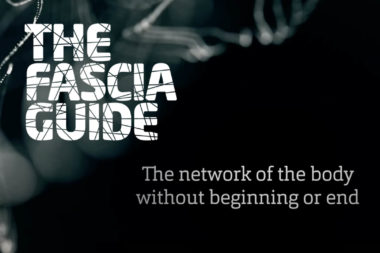

How do you know how to place your feet – what is proprioception?
The answer is proprioception and fascia.
Proprioception is often described as the innate ability to sense the body’s position in relation to the environment and space, also known as spatial awareness. It’s a vital skill for all humans and animals, but it can vary in quality and it can be improved. An animal with poor proprioception is unlikely to survive. Poor proprioception leads to poor coordination and balance, increasing the risk of injury.
An example of proprioception is when you walk up stairs and know exactly how much to lift your feet without looking at each step. Or when you get out of bed in the dark, you know exactly how to support yourself with your arms and legs to maintain good balance without even thinking about it, because you’ve done it before in daylight. Blindingly putting your index fingers together and hitting fingertip to fingertip, or putting your index finger on your nose, are also examples of proprioception.
What are proprioceptors and how do they work?
Proprioception is about finely tuned, well balanced movements to create smoothness, balance, and precision. There must be rapid communication so that the entire body can communicate. Nerve receptors that receive impressions about the body’s position, speed in movements, changes in direction, etc. are called proprioceptors. They can be found in ligaments, tendons, joint capsules, muscles, and in the proper fascia. Tendons, ligaments, and joint capsules are also a type of fascia, and receptors in muscles are embedded in the fascial layers around muscle fibers and bundles, so really, all receptors are in the fascia.
Proprioceptors react to abnormal tension and stretching, positional changes, and the speed at which it occurs. They are constantly signaling to the spinal cord and brain, which sends signals back to the muscles to correct and change their work to change position and keep the body in balance to avoid injury. These signals go through myelinated rapid nerve fibers from the receptors to the central nervous system and back to the muscles. For it to go really fast, the nerve fibers are isolated with a layer of fat, myelin. The thicker the myelin layer, the faster the signal transfer, so a certain amount of fat is important in the diet.
Each nerve cell and nerve fiber is also surrounded by and woven into the fascia, just like muscle cells and all other tissues in the body. This means that it is important to have a well-functioning fascia for proprioception to be as good as possible to avoid injuries.
What can cause impaired proprioception?
A dense, stiff, and inelastic fascia can hinder the nerve signals from reaching their destination quickly, and can also affect the function of proprioceptors due to increased pressure around them. Therefore, anything that negatively affects the fascia also negatively affects proprioception.
Poor proprioception increases the risk of injuries, and an injury can, in turn, worsen proprioception, creating a vicious cycle. Pain can cause changes in movement patterns, and the body compensates to avoid pain, which can lead to new injuries and more pain. Joints can become stiff from incorrect use, muscles that are not used atrophy, and others become overworked. The fascia can also become contracted and stiff, reducing flexibility and elasticity.
Overuse can cause the fascia to become stiff and create micro-damage without causing an actual injury. When the fascia becomes stiff in a particular area, the body loses balance, and some movements become difficult, leading to compensations, as said above. Eventually, this can result in injuries if not addressed promptly.
Sedentary lifestyles and lack of movement can also negatively impact the fascia and proprioception. This can occur due to injury, illness, or simply sitting too much in everyday life. Regular and moderate physical activity is crucial to keeping the fascia elastic and supple and to maintain coordinated movements.
Proprioception declines with age, and children generally have worse proprioception than adults. However, proprioception can be trained as a child grows and matures. A teenager who engages in moderate physical activity can train their nervous system to improve proprioception.
Various injuries, illnesses, and nutritional deficiencies (such as fatty acids, vitamin E, magnesium, selenium, and B-vitamins) can also affect the nervous system, fascia and proprioception.
How do I notice that I have poor proprioception?
Occasionally stumbling in a staircase, hitting a door frame, or knocking out a cup of coffee, is not necessarily alarming. We all do it from time to time! However, if it starts happening frequently, it is advisable to get it checked out.
What can I do to improve my proprioception?
The most important thing is to move regularly, daily and at a moderate pace without overexerting oneself. Reducing stress is also important as stress negatively affects the fascia and proprioception.
In everyday training, it is important to warm up properly and also to cool down afterwards to flush out waste metabolites and lactate so that the fascia stays in shape. The training load must also be gradually increased to avoid overexertion. A tired body loses concentration and balance, excess lactate makes the fascia acidic and that affects hyaluronan to become more viscous, and the risk of injury increases. Smooth elongation and balance exercises train core strength, balance, and proprioception and can be easily done daily.
Regular fascia treatment keeps the fascia supple and the body in better balance with better fluid flow, which can reduce the risk of injury. This is particularly important if one does not have the opportunity to move enough in everyday life. Fascia treatment can be performed manually or with soft vibrations, and several of the important proprioceptors in the fascia are stimulated by soft vibrations. The treatment is very effective to loosen up a condensed fluid flow in the fascia and is also very pleasant and enjoyable.

























